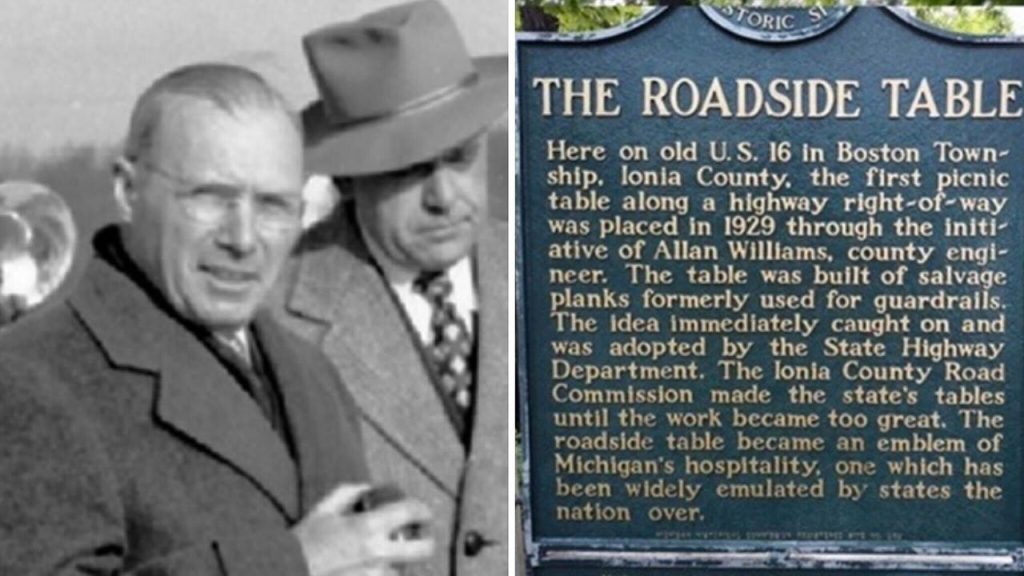In the roaring 1920s, Chrysler, Ford, and General Motors emerged as the world’s top automakers in Detroit, Michigan, sparking the need for infrastructure to support the growing popularity of automobiles. Allan Williams, the first highway engineer in rural Ionia County, Michigan, played a key role in revolutionizing the American highway system. Williams not only conceived and created America’s first roadside rest area in 1929 but also influenced the development of highway road maps, road signs, and snowplows, showcasing his curiosity, intellect, and vision.
Allan Williams, born in 1892 in Ludington, Michigan, inherited a passion for engineering and fixing things from his father. Williams found his calling as a county engineer for the Ionia County Road Commission in 1919, at a time when automobile travel was becoming increasingly popular. Witnessing travelers eating on the side of the road frequently, Williams saw the need for better facilities for resting and refreshing along highways. He took initiative during the winter of 1928 to build picnic tables from leftover scrap lumber, ultimately creating the first roadside rest area on Route 16, south of the Village of Saranac.
Williams’ roadside rest area quickly gained popularity and acclaim, with more than 500 pieces of written feedback received at table locations from motorists across the country. By 1937, nearly 1,500 picnic tables had been placed around Michigan, many constructed by Williams’ staff in Ionia County. The state eventually took over the responsibility, expanding the concept to create full-service highway rest areas with thousands of picnic tables. Williams’ vision for highway respite spread rapidly, shaping the convenience and comfort of American road travel.
Throughout his lifetime, Allan Williams served as a civic leader both in peacetime and wartime, contributing to various projects in Ionia County and receiving recognition for his contributions to Michigan’s transportation infrastructure. His diverse skills and interests, along with his dedication to community service, left a lasting legacy in the region. Williams was honored with a Michigan Tourism Award in 1976 for his work in promoting tourism within the state, highlighting the impact of his innovative approach to highway engineering.
While there is some dispute over the origin of the roadside rest area concept, with evidence pointing to other early instances in Connecticut and Michigan, it is clear that Williams’ role in popularizing the idea and expanding it to a state and national level was significant. His work in pioneering roadside amenities and improving the overall highway system in Michigan set a precedent that was later emulated worldwide. Williams’ impact on the American highway system, and transportation infrastructure in general, should not be underestimated, showcasing the innovative spirit and visionary thinking of this “Renaissance man” from small-town Michigan.
In conclusion, Allan Williams’ contributions to the American highway system, including the creation of the first roadside rest area and his influence on road infrastructure development, have left a lasting legacy. His vision for enhancing the convenience and safety of road travel, coupled with his civic leadership and commitment to community service, solidify his place as a key figure in the history of transportation engineering. Williams’ innovative approach to addressing the needs of travelers along highways and his dedication to improving the overall experience of road travel have had a lasting impact, shaping the way we perceive and utilize highway amenities today.


